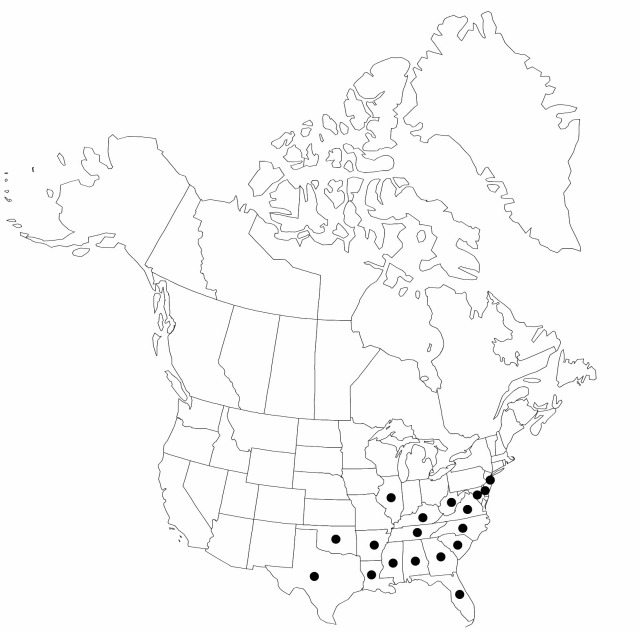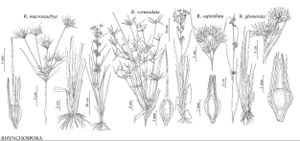Rhynchospora glomerata
Enum. Pl. 2: 234. 1805.
Plants perennial, cespitose, 80–150 cm; rhizomes absent. Culms excurvednodding, leafy, triangular, slender; principal leaves overtopped by culm; blades flat, 2.5–5 mm wide, apex attenuate, trigonous. Inflorescences terminal and axillary, spikelet clusters mostly 2–6, compact, turbinate to hemispheric, 1.5–2 cm wide; peduncles progressively shorter distally on culm; bracteal leaves mostly exceeding subtended groups. Spikelets crowded, deep redbrown, lanceellipsoid, 4.5–6.5 mm; fertile scales ovatelanceolate, 3.5–4 (–4.5) mm, apex acute, midrib mostly shortexcurrent. Flowers: perianth bristles 6, overtopping tubercle, antrorsely barbellate. Fruits (1–) 2 (–3) per spikelet, 3–4 mm; body dark redbrown with pale center, stipitate, lenticular, obovoid, or orbicular, 1.5–2 × 1.2–1.4 mm, base narrowed, margins pale, wirelike; surfaces slick; tubercle triangularsubulate, 1.3–1.5 (–1.8) mm.
Phenology: Fruiting summer–fall.
Habitat: Moist to wet meadows, swales, fens, flatwoods, and bogs, 0–500 m
Distribution

Ala., Ark., Del., Fla., Ga., Ill., Ky., La., Md., Miss., N.J., N.C., Okla., S.C., Tenn., Tex., Va., W.Va.
Discussion
Rhynchospora glomerata is often associated with R. capitellata and is distinguishable by its taller, slightly stouter habit; longer, slightly paler spikelets; and longer and broader fruit body. It is a common lowland weed in the southern Piedmont, Atlantic coastal plain, and Gulf coastal plain, where it is often more associated with R. inexpansa.
Selected References
None.
Lower Taxa
"shortened" is not a number."wider" is not a number.
